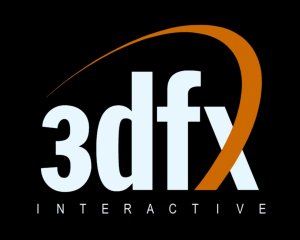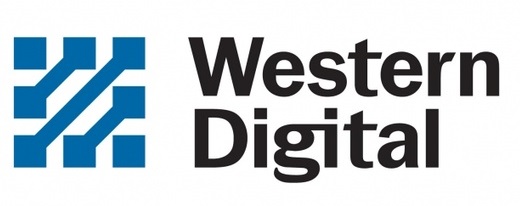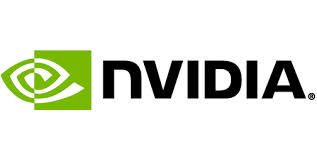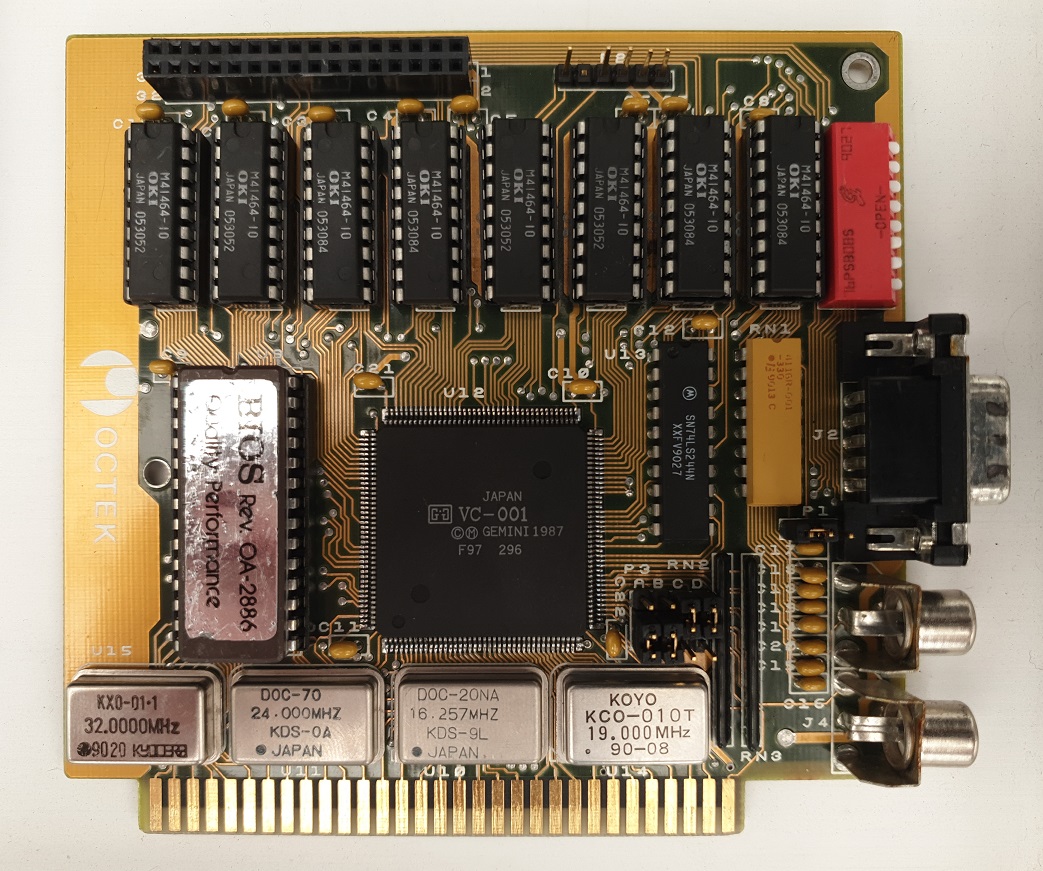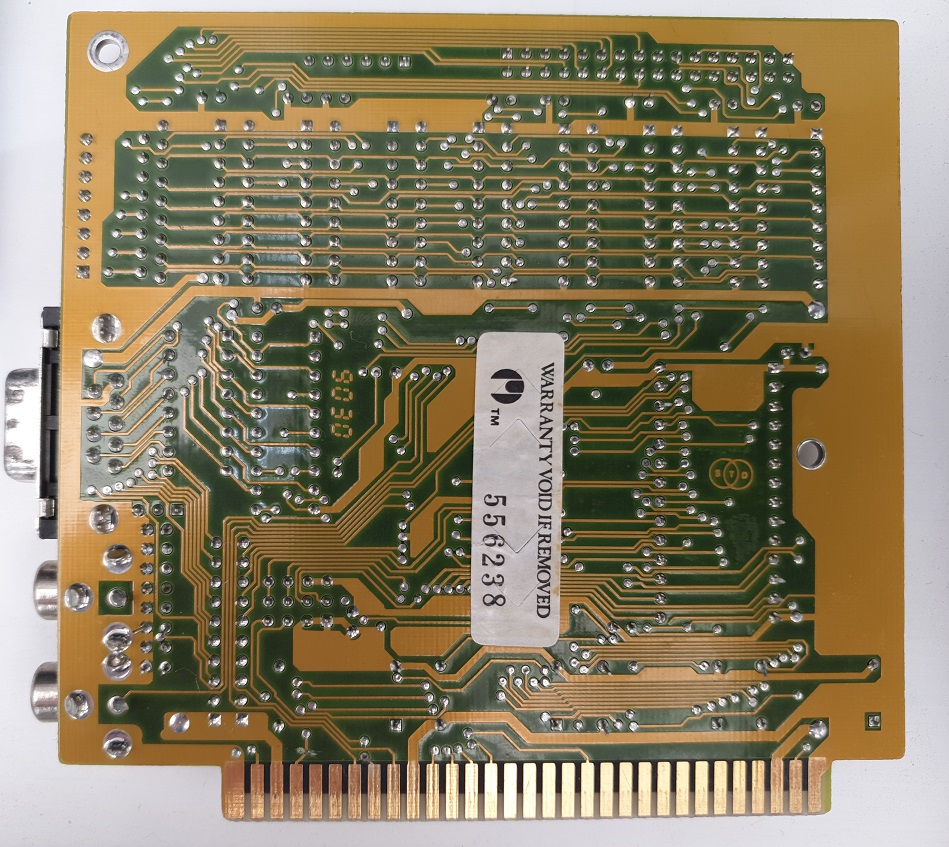My Graphics Cards
Over the years I have put together a fairly good collection of graphics cards; about 62 at the last count (60 of them are listed here). This page catalogues these. One advantage of having these is that it allows me to put together a "period correct" retro system, regardless of the period I choose. Of course you could always over-do it by putting in something that would have only existed several years later and you'd get an amazing system, but for some of us that's just not "right".
The vast majority of my collection are considered Super VGA cards, as this spanned the longest time period, but there are some pre-SVGA ones too. For Hercules, CGA and EGA cards in my collection, click here.
This catalogue is listed by chipset maker rather than OEM (Original Equipment Manufacturer) if the card is using a 3rd-party chipset, otherwise the card manufacturer is listed.
S3 Cards
As you most likely know, S3 were not a graphics card manufacturer - they designed and manufactured the chipset at the heart of numerous video cards, but since the chipset makes up so much of what a graphics card's capabilities are, I'm calling these "S3 cards".

S3 86C805 (on an Orchid 2 MB Fahrenheit VA/VLB card, ca. 1990)
Bought as part of a bundle in 2014 for £48 incl. STB, Ahead & Trident cards
This was the first VESA Local Bus graphics card I acquired. I did a full review of this card in January 2023. Back in the 90s I never had a VLB graphics card, and in fact only had one PC that ever supported VESA Local Bus. I bought a brand new AMD Athlon system from Time Computers - around 1999 they were a prominent PC builder in the UK. That machine came with a VLB multi-I/O card, but had a PCI graphics card, of which I forget the brand. The machine was very forgettable - Time were the kind of builder who bundled a ton of items into a PC deal, 99% of which was utter trash, be it the bundled software or useless expansion cards of cheap origin you'd never use. Anyway, I digress....


S3 Vision964 (on a Number Nine GXE64 Pro 2 MB PCI card, ca. 1994)
Can't recall where I picked this up
Ah, Number Nine... they made some great cards for a short time - very underappreciated I feel.


Trio 64V+ (unknown brand 1 MB), ca. 1995
Part of a bundle bought in 2019 for £67 incl. a Slot 1 mobo, 2xSB cards, ATI Radeon, 2x net cards

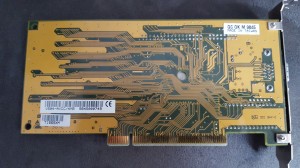
ViRGE/DX (on a Yakumo 4 MB PCI card), ca. 1997
Can't recall where I picked this up
Yakumo was a name I was unfamiliar with, but it turns out they have various S3 ViRGE/DX variants and even a 3Dfx Voodoo Rush card!
_front_thumb.jpg)
_rear_thumb.jpg)
Trio 3D/2X (on an ACorp ST-362A 4 MB AGP 2x card, ca. 1999)
Bought in 2020 for £9.49


Savage4 (32 MB AGP 2x card) ca. 1999
Can't recall where I picked this up
The ViRGE/DX is just a tad slower than a Matrox Mystique 220 PCI (both with 4 MB RAM) in a Windows system with a Pentium 100. Its image quality isn't great though. ViRGE did however get low-resolution VESA modes in DOS in addition to 15-bit colour modes.
So what is missing from my S3 collection? Well, many cards that pre-date the Vision964, such as the 801, 911 and 928 (all 32-bit chipsets) - the 801 was a low-cost one (though still faster than an equivalent Cirrus chipset of similar era), the 805 supported VESA Local Bus and the 805i supported interleaved DRAM, and the 928 was a high-end chipset. The 964 was one of their newer 64-bit chipsets.
What would also be nice for the collection is a ViRGE/GX as it got synchronous memory that the DX did not, or a Savage4 Extreme (faster core clock) which is just about the pinnacle of S3's history in the graphics card world.
Sadly almost all S3 cards came with pretty poor drivers, which often push them down my priority list to install in a retro PC.
Matrox Cards
Matrox were known to have a very crisp, clear 2D image quality. This was in part because they manufactured all their own cards and they used a 5-stage output filter on their RAMDACs where most other cards used 2 or 3 stages. Compatibility did suffer in certain DOS games that used some scrolling techniques.
On Mystique and Millennium II cards, be sure to disable the 'Use bus mastering' in the driver settings under Windows to avoid lock-ups.


Millennium 4 MB AGP 1x card, ca. 1997
Bought in March 2021 for £6.88
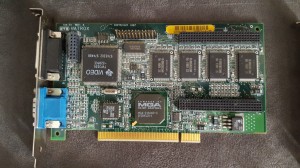

Millennium II 4 MB PCI card, ca. 1997
Bought in 2021 for £14.49


Millennium II 4 MB PCI card, ca. 1997
Bought in 2021 for £6.88 - colours are a bit weird
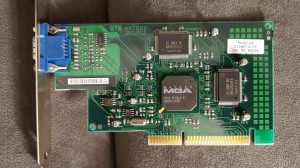

MGA G100 4 MB (OEM) AGP 1x card, ca. 1997
Can't recall where I picked this up, but def. before 2005 - *Not Working*


MGA G100 4 MB AGP 1x card, ca. 1997
Bought in 2020 for £7.69
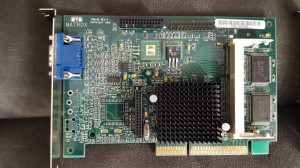

Millennium G200 8 MB AGP 2x card, ca. 1998
Can't recall where I picked this up, but def. before 2005


Millennium G400 Dual Head 16 MB AGP 4x card, ca. 2000
Bought in March 2021 for £7.40


Millennium G450 Dual Head 32 MB AGP 4x card, ca. 2000
Bought in March 2021 for £8.98


Millennium G550 32 MB AGP 4x card, ca. 2002
Bought in May 2018 for £5.99
nVidia Cards
nVidia were late to the party, having launched their first card, the RIVA 128, in 1997. This makes these cards way beyond the DOS era. Still, I have a number of cards for old Windows boxes. I also have later nVidia cards (post-2002), but they are irrelevant for the purposes of this retro website.


RIVA 128 (on an STB Microsystems Velocity 128 8 MB AGP 2x card, ca. 1997)
Can't recall where I picked this up (pre-2017)

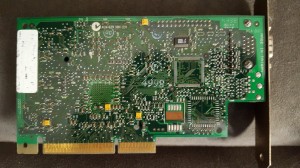
RIVA TNT (on a Diamond Viper V550 16 MB AGP 2x card, ca. 1998)
Bought in 2018 for £10.36

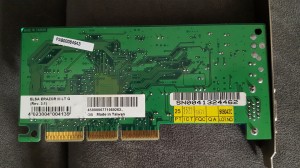
RIVA TNT2 (on an ELSA Erazor III LT G 32 MB AGP 4x card, ca. 1999)
Bought in 2018 for £11.22
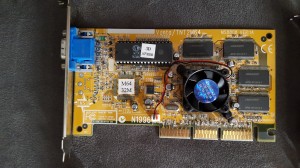
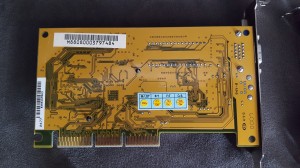
RIVA TNT2/M64 VANTA (on an MSI MS8808 32 MB AGP 4x card, ca. 1999)
I think this came in my Time Computers AMD Athlon PC


GeForce 2 MX400 SH Max (on a Leadtek/Winfast 64 MB AGP 4x card, ca. 2001)
Bought in 2021 for £12.20


GeForce 2 MX400 (on an ELSA Gladiac 511 TV-Out 64 MB AGP 4x card, ca. 2001)
Bought for $3 in a bundle in December 2022 for $55.80 USD, including a Trident 3DImage 9750 ($5), a C&T-based ISA SVGA card ($7), a Tekram CaptureTV M200 card ($5), and a Sound Blaster ViBRA 128 (CT4810) ($3.50).
The ELSA Gladiac 511 TV-OUT only cost me $3 to buy - it was in 'For Parts' condition, so I wasn't expecting it to work.


GeForce MX (on an ASUS AGP-V7100 32 MB AGP 4x card, ca. 2002)
Bought in 2020 for £8.70
The GeForce 256 is the one card that is glaringly missing in my collection. It was a game changer when it launched in October 1999, and would be a top pick for any late 90s retro gaming box due to its excellent driver support and fantastic performance (for its time).
ATi Cards
Despite the fact ATi have been around forever, the early cards are now incredibly rare. I've picked up quite a number of their 1990s cards over the years, and I do have a number of later post-2001 ones, but those are irrelevant for the purposes of this retro website.
.jpg)
.jpg)
Rage IIc 4 MB AGP 2x card, ca. 1996
Bought in Nov 2023 for £5.93

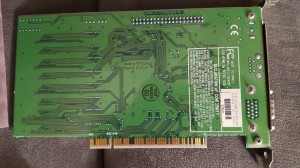
3D Charger (Rage II+ DVD) 2 MB PCI card, ca. 1997
Bought in 2017 for £16.25


3D Rage Pro 4 MB SGRAM PCI card, ca. 1997
Bought in 2017 for £9.40


3D Rage Pro Turbo 4 MB AGP 2x card, ca. 1998
Can't recall where I picked this up (pre-2017)

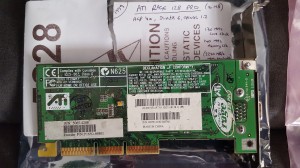
Rage 128 Pro 16 MB AGP 4x card, ca. 1999
Bought in 2019 for £7.00


Rage 128 Ultra 32 MB AGP 4x card, ca. 1999
Can't recall where I picked this up (pre-2017)


Rage Fury Pro 16 MB AGP 4x card, ca. 1999
Bought in Nov 2023 for £14.95


Radeon VE (7000) 64 MB AGP 4x card, ca. 2001
Part of a bundle in 2019 for £67 incl. Slot 1 mobo, 2xSB cards, S3 Trio 64V+, 2x net cards
3dfx Cards
Famous for their 3d accelerator cards in the late 90s, 3dfx cards are now becoming costly to buy. I have just one card from 3dfx:


Voodoo Graphics 4MB PCI card, ca. 1996
Bought in March 2019 for £26 incl. Diamond Stealth Video 2500
.jpg)
Ensoniq 3D Voodoo Banshee 16MB AGP card, ca. 1998
Bought in February 2024 for £76
Tseng Labs Cards
The Tseng Labs name was synonymous with high performance in the DOS era, beaten only by the ARK2000 chipset. Any chipsets that have an 'i' or 'p', e.g. W32i or W32p mean the card supports memory interleaving.
.jpg)
Sigma Designs VGA-H16 (ET3000AX card) 256 KB 16-bit ISA card, ca. 1989
Bought in February 2024 for £29
This ET3000 card is a pretty standard non-expandable 256 KB SVGA card. It has the VESA expansion connector on the top (very rarely used feature), and looks like it has pin headers for the 9-pin digital TTL port but it's lacking the port itself.

ET4000AX 1 MB 16-bit ISA card, ca. 1989
This card above has the Sierra "32K Hi-Color" DAC - what does this mean? Well, it means the card provides the ability to output 32,768 simultaneous colours (hence the 32K in the name). This is also sometimes called 16bpp (bits per pixel), so it falls short of some much more expensive cards at the time that supported 24bpp, which also got the title "True-Color". With eight Sanyo-branded LC324256AP-80 RAM chips, this gives the card a decent 1 MB of video memory (each chip is 256x4-bit so 128 KB per chip), and 80ns is plenty fast.

Performance is excellent for a 16-bit ISA Super-VGA card. I ran VidSpeed on it on my 80286-20 (0WS), and it averaged 6265 bytes/ms. I also ran Check-It v3.0 and VMax256. The BIOS does not contain any VESA extensions. After installing the Tseng Labs VESA extension called TLIVESA, I ran VESATest which lists all the video modes supported by the card. This card tops out at a resolution of 1280 x 1024 in 16 colours, 1024 x 768 in 256 colours, and 800 x 600 in 64,000 colours.
Click here for a dump of the 32 KB video BIOS ROM, which is dated 01/01/92 and is V8.02X. It resides at C000-C7FF.

ET4000AX (on an STB Powergraph 2.0 16-bit ISA card, ca. 1991)
The STB Powergraph 2.0 card above (OEM ID: STB TLI4:Powergraph VGA) features the same Tseng Labs ET4000AX SVGA chipset and the BIOS supports VESA version 1.1 extensions. It has 512 KB of installed video RAM which curiously is a mix of 80ns and 100ns chips made by Micron Technology (MT4C256-8 and MT4C256-10). It seems to function well enough with this mix. I ran VidSpeed on it on my 80286-20 (0WS), and it averaged 6100 bytes/ms at 320 x 200, but at higher resolutions this dipped to 3400 and lower (most likely due to the 512 KB RAM imposing a limit on the video buffer). I also ran Check-It v3.0 and VMax256. I ran VESATest which lists all the video modes supported by the card. This card tops out at a resolution of 1024 x 768 in 256 colours. By filling in the extra DRAM sockets to give this card the full complement of 1 MB, it should be able to get up to 1280 x 1024.
Click here for a dump of the 24 KB video BIOS ROM, which is dated 01/01/92 and is V8.02X. It resides at C000-C7FF.
I would like to get an ET4000-W32/p like a Hercules Dynamite Pro 2 MB DRAM card - these are VESA Local Bus, operate on a 32-bit memory interface and support up to 4 MB of RAM for super high resolutions in Windows. Even with just 2 MB it performs bank interleaving. In DOS, it's performance is just about top of the pile, so for a 486 rig this would be a fantastic card.
Imagination Technology PowerVR Cards
Impressive but short-lived in an aggressive consumer PC market, the PowerVR chipsets date back to 1996. They are still going strong today in various bespoke markets. I have only one PowerVR card:

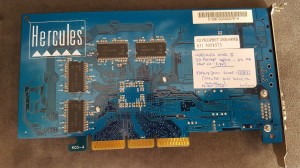
Kyro II (on a Hercules 3D Prophet 4500) 64 MB AGP 2x card, ca. 2001
Alliance ProMotion Cards
Not that well known, probably most famous for its ProMotion AT24 chipset being used as the 2D portion of the 3dFX Voodoo Rush. The ProMotion 6422 cards were known to be faster than the Cirrus Logic CL-GD5434 as well as some S3 chips for Windows, but DOS/standard VGA performance was poor.
I have one card that uses an Alliance Semiconductor graphics chipset:
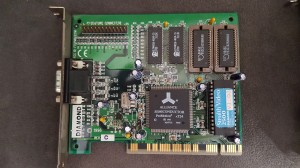

AT24 (on a Diamond Stealth 2500 Video 1 MB PCI card, ca. 1996
Bought in March 2019 for £26 including a 3dfx Voodoo 4 MB
Western Digital Cards
For ISA cards from WD (who acquired Paradise Technology in 1987/1988), the 90C3x range was well liked; these were 32-bit DRAM-based and performed well. My card below is a 90C30 variant, which was also known to be manufactured by Tandy around 1991 for one or more of their PC-compatibles. WD also produced an earlier 90C00-JK and also a later 90C33-ZZ which found its way onto some VESA Local Bus cards such as the STB Powergraph C33. The 90C33 was a true graphics accelerator.
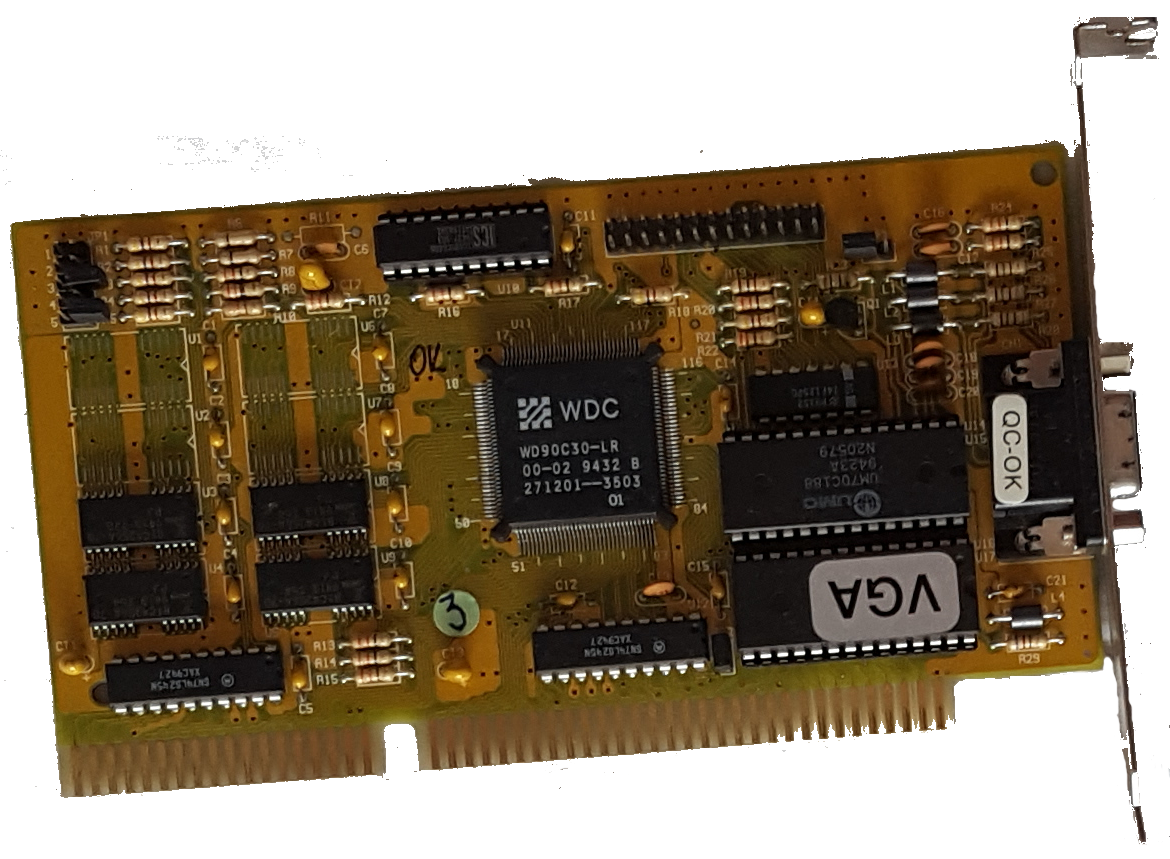
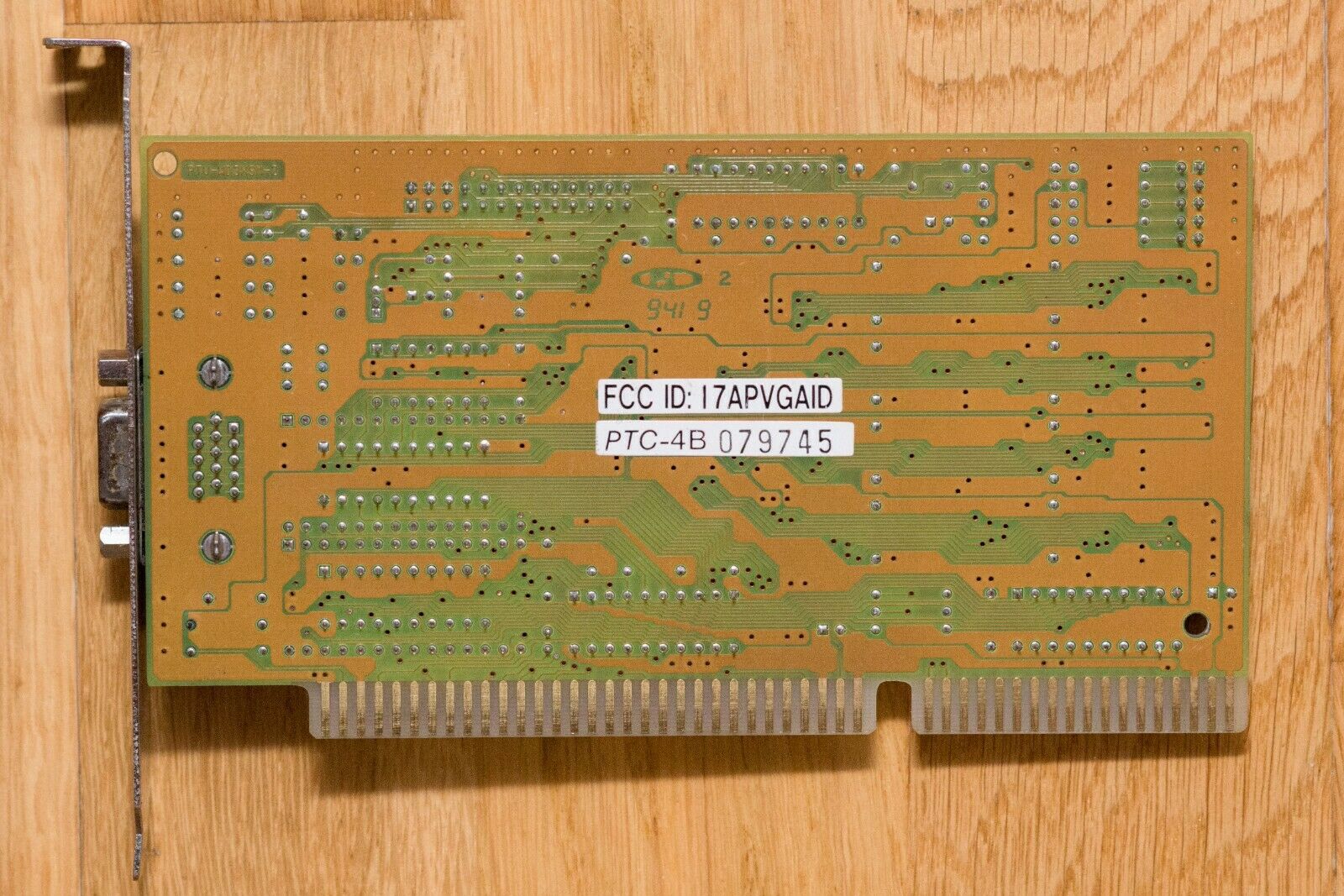
WD90C30-LR (on a Northman Technologies 16-bit ISA card, ca. 1992)
My card has 512 KB of Fujitsu-branded (61C4256A-70) video RAM - unfortunately, this card doesn't have DRAM sockets so upgrading the card to 1 MB would be a more lengthy job. The VGA BIOS supports VESA version 1.1 extensions.
I ran VidSpeed on it on my 80286-20 (0WS), and it averaged 6300 bytes/ms. I also ran Check-It v3.0 and VMax256. I ran VESATest which lists all the video modes supported by the card. This card tops out at a resolution of 1024 x 768 in 16 colours and 800 x 600 in 256 colours. It's the fastest 16-bit ISA card I have, just beating the two Tseng Labs ET4000AX cards in all performance benchmarks I've run. Having said that, it's likely only faster because of its 70ns DRAMs, and if I upgraded my ET4000 with 70ns [or even 60ns] chips it would outperform this WD90C30.
Click here for a dump of the 32 KB video BIOS ROM, which has a copyright string of "IBM COMPATIBLE PARADISE003234-524COPYRIGHT WESTERN DIGITAL INC. 1987,1991, ALL RIGHTS RESERVED". It resides at C000-C7FF.
Number Nine Cards
I have an S3-based Number Nine card (see here), but this section is for those based on Number Nine's own chipsets. I only have one of their chipsets' cards in my collection:

Revolution 3D 8 MB AGP card with its T2R (Ticket to Ride) chipset, ca. 1997
Bought in February 2024 for $39
The Revolution 3D came out with either 4 or 8 MB of WRAM, but later models used faster SGRAM. Mine has the 8 MB of the older WRAM type, but can be fitted with an expansion module to extend it to 16 MB. It was their flagship card when it came out, competing with the Matrox Millennium II (with its 8 MB WRAM), 3DLabs' Permedia 2 cards, and nVidia RiVA 128 cards like the STB Velocity 128. The Revolution 3D won PC Magazine's Editor's Choice in December 1997, beating off 21 other PCI cards and 9 AGP cards it was put up against. Other prominent cards such as the Hercules Dynamite 3D and Stingray 3D came close, as did the Diamond Fire GL 1000 Pro and Viper V330, but the Number Nine was the best of the bunch, offering support for DirectX and OpenGL.
Cirrus Logic Cards
Renowned for their high degree of compatibility, and on the later cards, high performance as well. Cirrus Logic cards are great all-rounders for DOS. I have these CL cards in my collection:

CL-GD510/520A (on an unknown brand 8-bit ISA card with 256 KB RAM, ca. 1990)
This card was an original that my older brother managed to acquire around 1990. It still works well and probably has the best compatibility when running Hercules, CGA and EGA modes than any other card in my collection. It was also used as part of my OPTI 386/486 Hybrid motherboard review (page 2).

CL-GD510/520A (on a Unitron U3969A-V3 8-bit ISA card with 256 KB RAM, ca. 1990)
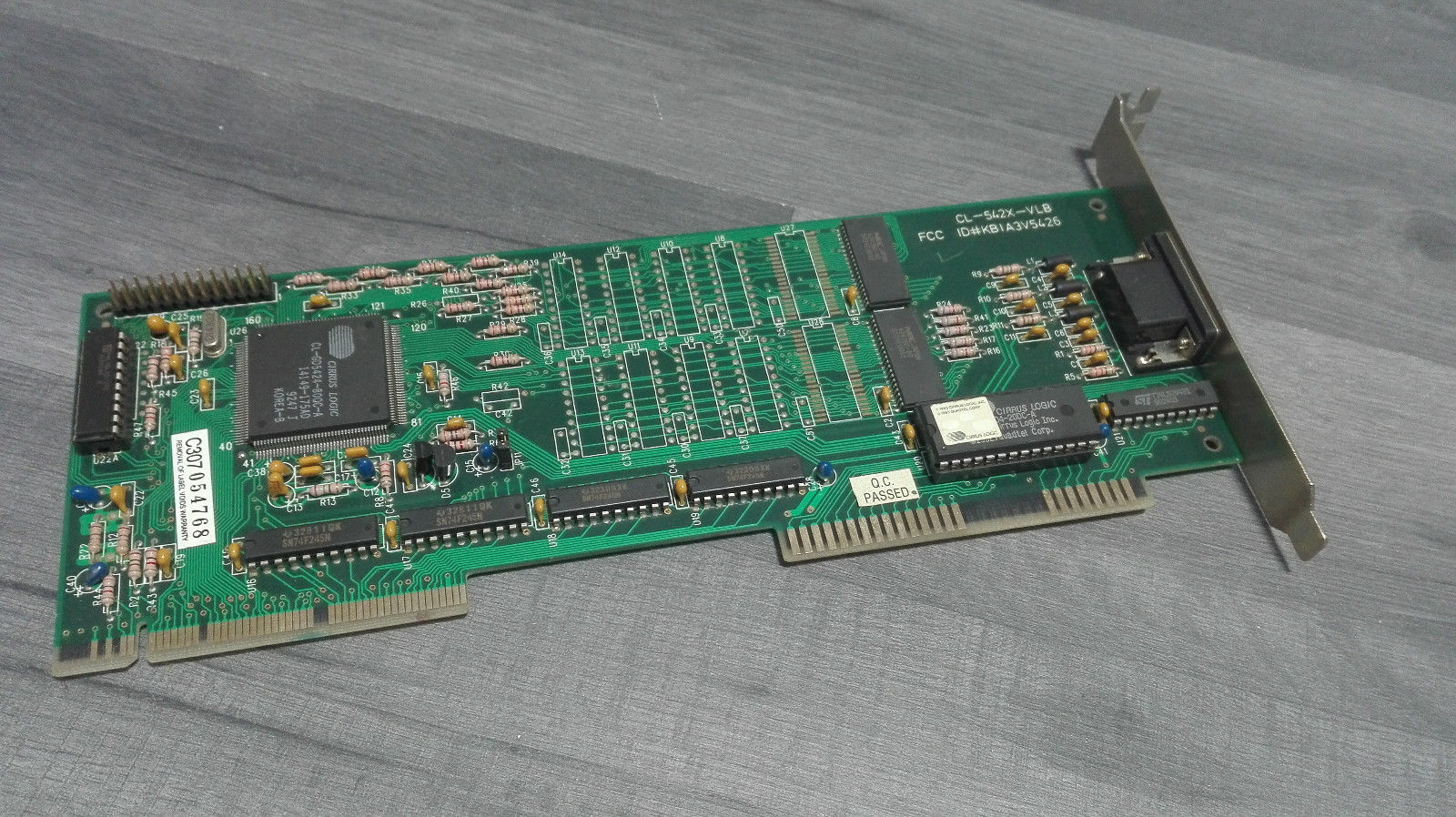
CL-GD5422 512 KB VESA Local Bus card, ca. 1991)

EliteGroup VideoImage VI-711A CL-GD5428 1 MB VESA Local Bus card, ca. 1993)
This EliteGroup Computer Systems card is the fastest VLB Super VGA card I have. Rocking a CL-GD5428 chipset, it was one of the fastest cards for DOS with its 50 MHz 32-bit memory interface. The soldered-in 1 MB are in eight Vitelic V53C104FP 60ns 20-pin DRAMs, with eight sockets for further expansion up to a maximum of 2 MB. With the full 2 MB installed the maximum resolution this card supports is 1280 x 1024. The only jumper on the card, JP1, tells the card to either use the 14 MHz crystal beside the jumper (2-3 closed), or use the ISA bus clock (1-2 closed).
According to Stason.org, there was a VI-710 and VI-711 (both non-A suffixed). This was the same card but based on the Tseng Labs ET4000 chip, and came with 512 KB (VI-710?) or 1 MB (VI-711?) of video RAM as standard, expandable up to 2 MB.
.jpg)
FastWare VS921DS CL-GD5430 2 MB PCI card, ca. 1995
Bought for £13 in February 2024
Lots of their later cards are missing from my CL collection, but Cirrus Logic went very 'off-the-shelf' with chipsets after their 54xx series, and almost disappeared into obscurity from the mainstream graphics card market.
.jpg)
FastWare VC922C CL-GD5434 PCI card, ca. 1995
Bought for £12.99 in April 2021
Lots of their later cards are missing from my CL collection, but Cirrus Logic went very 'off-the-shelf' with chipsets after their 54xx series, and almost disappeared into o
Trident Cards
With a reputation for being cheap and cheerful, and usually poor performers, Trident cards today are ubiquitous and can be picked up cheap.
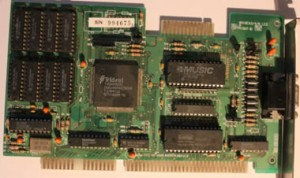
TVGA 8900C 16-bit ISA card with 1 MB RAM, ca. 1991
Bought as part of a bundle in 2014 for £48 incl. STB, Ahead & a Tseng Labs card

Trident TVGA 8900CL-B 16-bit ISA card with 1 MB RAM, ca. 1992
This card was used during my OPTi 386/486 Hybrid motherboard review (page 2).


Trident 3DImage9750 AGP 1x card with 4 MB SGAM, ca. 1998
Bought in a bundle in December 2022 for $55.80 USD, including a C&T-based ISA SVGA card, a Sound Blaster ViBRA 128 (CT4810), a Tekram CaptureTV M200 card, and an ELSA Gladiac GeForce2 MX400.
This last card cost just $5, and since it's a late Trident model I thought I'd add it to my collection. The 9750 was marketed as a 2D accelerator with some 3D capabilities, and it retailed for about half what a standard 3D accelerator card would have cost.
I'm not too keen on Trident cards, so I don't plan on extending my collection any further.
SiS Cards
More known for their motherboard chipsets, they also dabbled in a couple of graphics card chipsets over the years. The most well known was the 6326 AGP 3D graphics chipset. Here are the SiS cards I have:
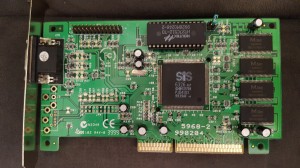

6326AGP (on a Pine Technology PT-5968 card 8 MB AGP 1x card, ca. 1998)
Bought in 2015 for £3.79


6326AGP (on a Diamond SpeedSTAR A50 8 MB AGP 2x card, ca. 1998)
Bought in 2013 for $10.95
Ahead Systems Cards
A relatively short-lived graphics chipset company, I have only one Ahead Systems card:

AVGA 512 KB 16-bit ISA card, ca. 1988
Bought as part of a bundle in 2014 for £48 incl. STB, Trident & a Tseng Labs card
Bought in 2013 for $10.95
Avance Logic Cards
Avance Logic were a smaller player in both the audio and graphics chipset business. I have only one graphics card from them:

Avance Logic RT-3601 1 MB PCI card, ca. 1995
Bought as part of a bundle in 2014 for
Chips & Technologies Cards
I only have one C&T Super VGA card, and it's this one:


F82C451C 256 KB 16-bit ISA card, ca. 1990
Bought in a bundle in December 2022 for $55.80 USD, including a Trident 3DImage 9750, a Sound Blaster ViBRA 128 (CT4810), a Tekram CaptureTV M200 card, and an ELSA Gladiac GeForce2 MX400.
My thinking behind purchasing this C&T-based graphics card from Jovian Logic is that the eight DRAM chips it came with would probably cost me the $7 I paid for the whole card. With 256 KB 100ns RAM and a 50 MHz RAMDAC, it's not going to take anyone's breath away but I didn't have any C&T cards until now.
.jpg)
.jpg)
Octek EVGA-16 256 KB 16-bit ISA card, ca. 1991
Bought in Nov 2023 for £30
This is another VGA card based on the C&T F82C451C VGA chipset, this time from Octek. Like the Jovian card above, it has eight 100ns DRAMs (OKI M4164) that are soldered in. The RAMDAC is a 50 MHz unit, an IMP IMP41V176D.
MDA, Hercules, CGA and EGA Cards
To support the earliest of motherboards in my collection, I have the following ISA cards that pre-date the VGA standard:
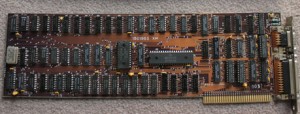
IBM 1501985 MDA (Monochrome Display Adapter) Card from IBM 5150, ca.1983
Bought for £11.64 in 2013
This was the original display adapter bundled with the IBM PC (model 5150). It's an 8-bit ISA card unsurprisingly, and at its heart is a Motorla 6845 CRTC (Cathode Ray Tube Controller) chip. In order to store the display data, 4 KB of RAM is built onto the card. Output to a monitor is achieved via the DE-9 port on the faceplate. This was intended to be connected to the IBM 5151 Monochrome Monitor. In terms of resolution, the MDA card does not support any graphics modes, but the theoretical resolution is 720 x 350 pixels. In the ROM chip are stored 256 bitmapped characters, which cannot be altered. The card used what would be called 'code page 437', which includes 95 printable ASCII characters and 33 ASCII control codes which have been replaced with various graphical symbols. The remaining 128 characters support among other thing, the ability to draw boxes.
While MDA didn't support graphics, it did support various attributes that could be applied to the text, including invisible, underline, bright, bright underline, reverse video and invisible reverse video.

IBM CGA (Color Graphics Adapter) Card from IBM 5150, ca.1983
Unsure from where I picked this up
Sold at the same time as the MDA card in 1981 was IBM's CGA card. Designed to work with the IBM 5153 "Personal Computer Color Display", a cost option for the IBM PC (model 5150). Again, it's an 8-bit ISA card unsurprisingly, and just like the MDA card drives a Motorla 6845 CRTC (Cathode Ray Tube Controller) chip. Video memory is just 16 KB to store the screen's maximum 640 x 200 resolution. Unlike the MDA card, the IBM CGA card supported two separate outputs: as per the above, you could use the DE-9 port to output to a CGA-compatible digital TTL monitor, or you could use the phono (RCA) connector to output the video to a composite monitor or NTSC television (though because the composite port only supports baseband video if you want to connect this to a TV without a composite video input socket, you would also need an RF modulator and tune it in). One reason why this composite port was included in the CGA card's design is that IBM didn't have a suitable monitor designed at the time to be able to drive this card - the IBM 5153 monitor would not arrive for another 2 years!

Kouwell KW-526K Hercules Graphics 8-bit ISA card, ca. 1984
Bought for £17.86 in early 2013
This card is similar to the one I had in my very first PC (sadly I don't recall what happened to my original). At its heart is the Tamarack TD3088A, along with a CRTC controller chip and two 4464x4-bit RAM chips which hold 32 KB each, so a total of 64 KB of video memory. Older versions of these cards got eight RAM chips, which would have been 4464x1-bit, so still add up to 64 KB. No Hercules cards needed more than 64 KB of video RAM to hold the frame buffer for the maximum 720 x 348 resolution in just 2 colours (plus blinking and high-intensity attributes!)
Most cards including this one added a bit of value by also providing a 25-pin Centronics parallel port/interface for use when attaching a printer to your PC (following suit from IBM who did this with their early video cards) - a lot of low-end PCs that ran a Hercules card & display like this were used predominantly for word processing, so this made sense to have it all on 1 expansion card.

Video 7 CGA Graphics card, ca. 1985
Came as part of a bundle auction

Twinhead CT-6040S Hercules Graphics 8-bit ISA card, ca. 1986
Bought for £21.99 in early 2020
Twinhead is probably a name that conjures up images of early laptop computers with names like DuraBook and SlimNote, more than it does video cards, right? But they did indeed start off in the world early PC video cards and other PC expansion options. The Twinhead 6040 video controller is quite a common IC on Hercules cards, up there with the Tamarack TD3088A. Several versions/revisions exist, including R, S and T, though I'm not sure what the differences were.
.jpg)
.jpg)
VDL Auto G7 CGA Card with 32 KB RAM, ca.1989
Unsure from where I picked this up
This is a CGA and Hercules-compatible card with a VDL ASIC at its heart. I'm not too sure what the 'Auto G7' name implies but I would assume it's just another Chips & Technologies 82C425 or 82C426 CGA CRT controller chip. The card has 32 KB of video memory soldered in, and the EPROM chip is the same as a UM2311 used to store display fonts. As with many old ISA graphics cards, it also has a parallel port on-board to support a printer.
.jpg)
.jpg)
FIDA Hercules and CGA 8-bit ISA cards, ca. 1988
Bought for £16.20 in Oct 2021
This was an interesting card that I picked up from Ebay. I tested it, and it works just fine with the jumpers set to Hercules mode on my Philips Computer Monitor 80, and when set to CGA mode (with DIP switches set as in the pic above), it displays on my Philips CM8833-II RGB colour monitor via the DE9 port. I have not tested composite out yet. I did a complete retro review on this card and some other identical cards I found in my collection.
Octek VC-001 Gemini EGA card, ca. 1987
Bought in May 2022 for $20 + $14.40 S&H
I wrote a full retro review of this nice Octek EGA card back in May 2022 when I acquired it for what I consider an excellent price. The card has the full 256 KB of video memory an EGA card can support, so it can run in 640 x 350 in 64 colours but can also manage a "Super EGA" mode of 800 x 600 in 16 colours. It is also backward-compatible with all MDA, Hercules and CGA modes.



